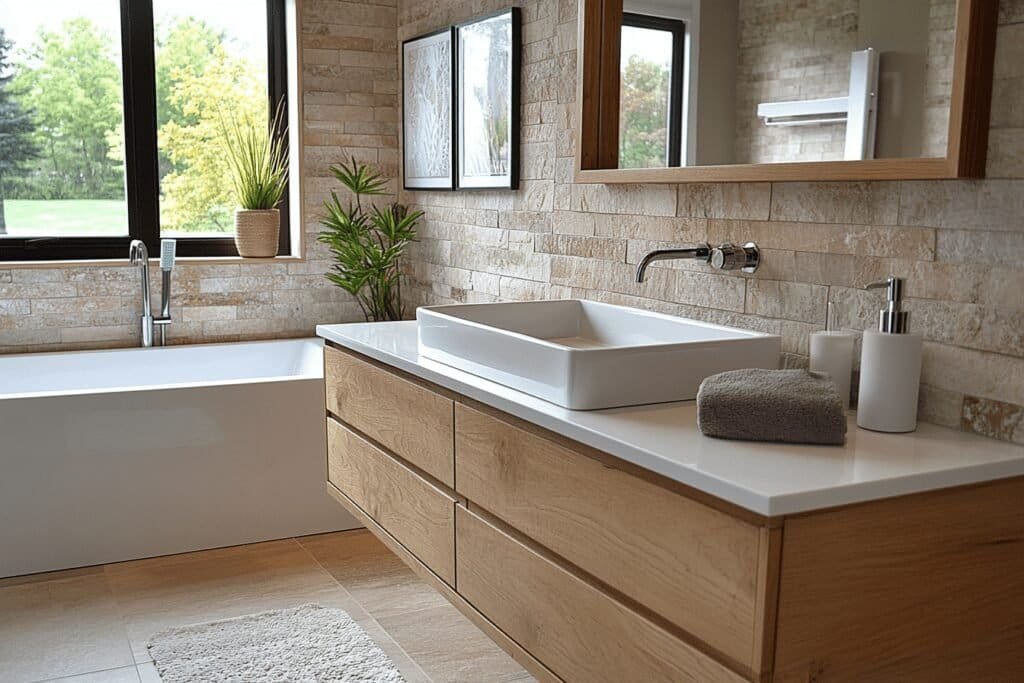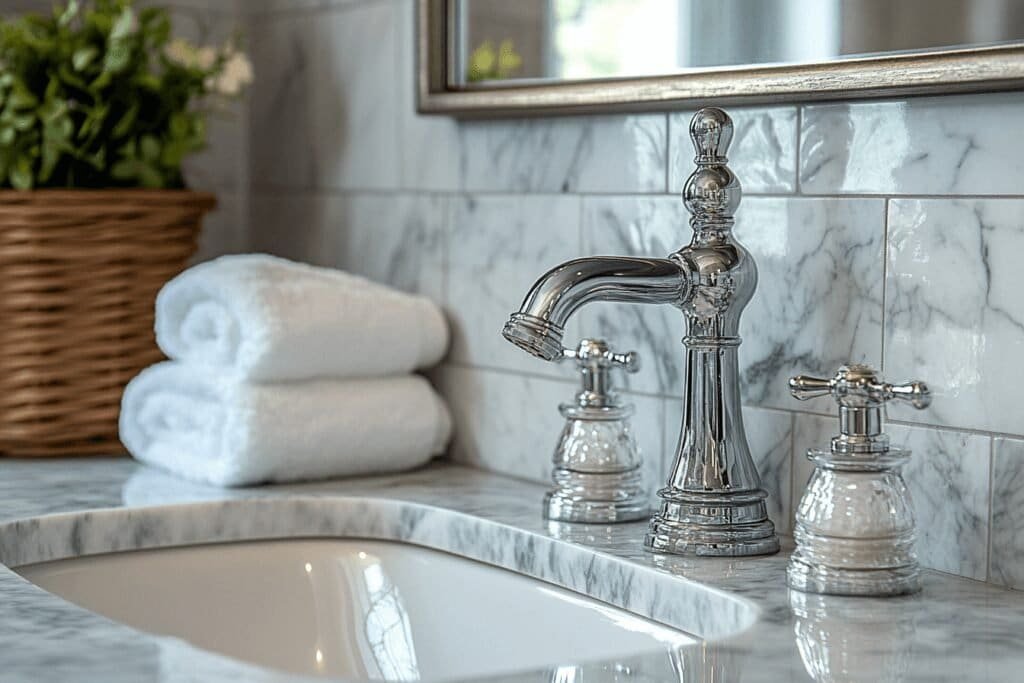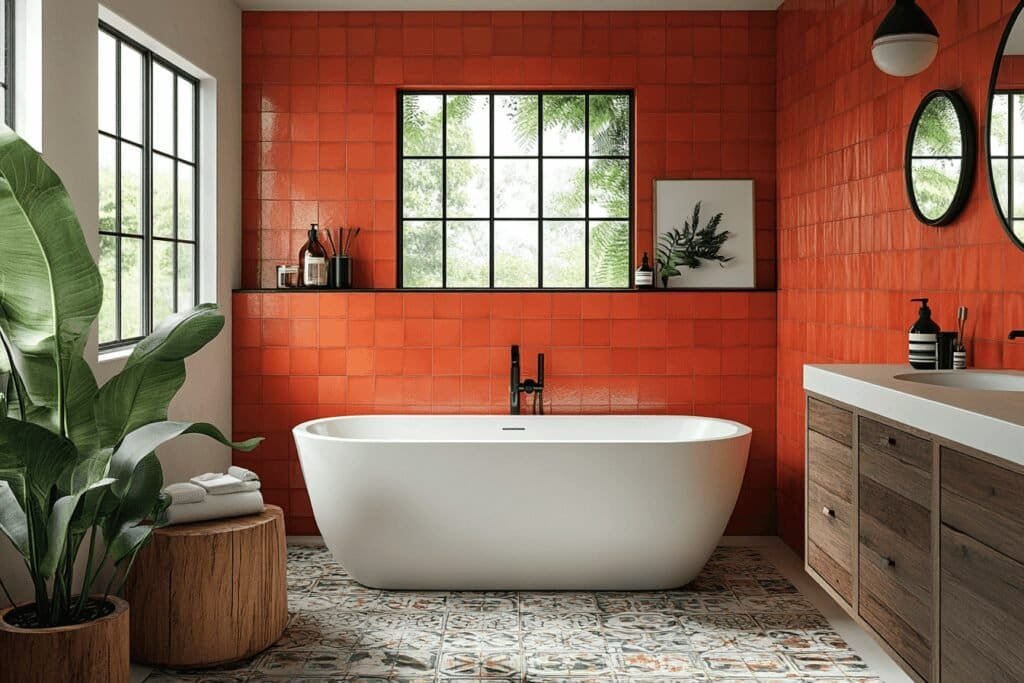Wet room designs have gained significant popularity in recent years due to their modern style and functional appeal. A wet room offers a sleek, minimalist look, making it an attractive option for homeowners looking to revamp their bathroom design. However, like any home improvement choice, a wet room has its pros and cons. In this article, we’ll explore the advantages and disadvantages of a wet room, how it compares to walk-in showers, and whether they might be the right choice for your next bathroom remodel.
What Is a Wet Room?
A wet room is a fully waterproofed bathroom where the shower area seamlessly integrates with the rest of the space. Without separation between the shower and the rest of the bathroom, water flows freely, with a sloped floor guiding it toward a drain for efficient management.
These bathrooms are known for their clean, open-concept design, often featuring floor-to-ceiling tiles that create a sleek, modern look. Ideal for those wanting to add a spa-like atmosphere to their bathroom, they offer a contemporary, minimalist appeal.
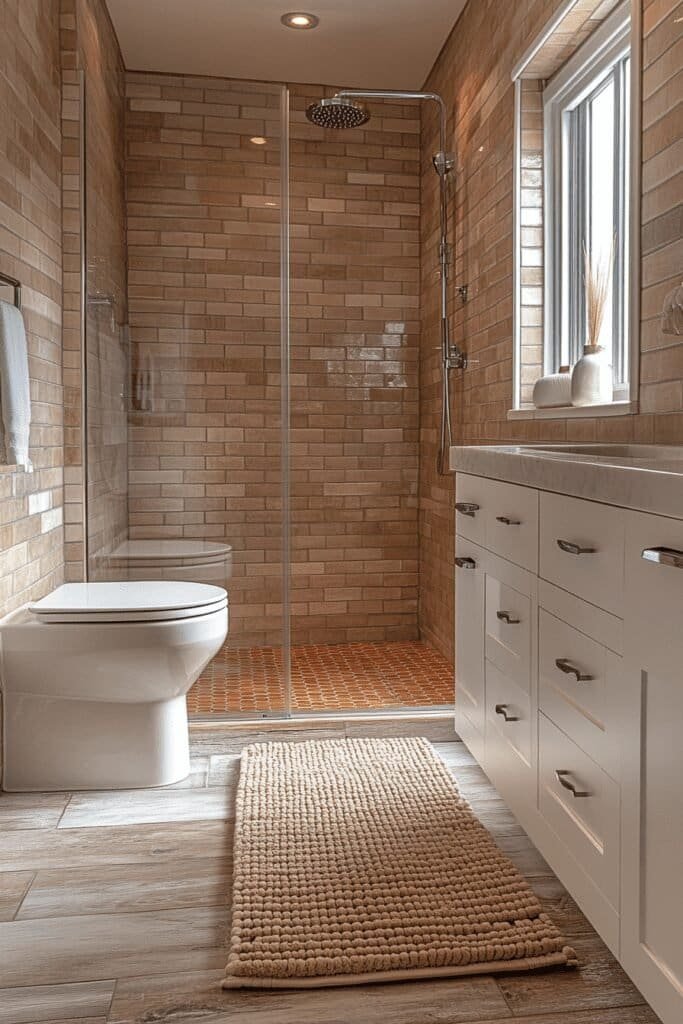

Wet Room Pros
1. Maximizing Space
Wet rooms are especially beneficial in small bathrooms because they eliminate the need for bulky shower enclosures or bathtubs. The absence of barriers helps the room appear more spacious, creating an open, airy feeling. This can make even a small bathroom feel significantly larger than it actually is.
2. Accessibility
One of the key benefits of this type of bathroom is its accessibility. With no steps or barriers, it’s an excellent option for individuals with mobility challenges, making it a great choice for an accessible bathroom design. It also serves as a smart long-term solution for those planning to age in place.
3. Aesthetic Appeal
Wet rooms deliver a contemporary, minimalist look. The seamless design, often paired with walk-in showers, makes wet rooms a popular choice in modern bathroom remodels. They are also highly customizable, allowing you to integrate features like floating vanities, wall-mounted toilets, or even a freestanding bathtub into the design.
4. Boosting Home Value
A well-designed wet room can increase your property’s value, especially in luxury homes or newly remodeled spaces. Many potential buyers are drawn to the sleek and sophisticated design of wet rooms, viewing them as a modern, high-end addition to the home.
5. Easier to Clean
With the entire room waterproofed, cleaning a wet room is often more straightforward than traditional bathrooms. There are fewer places for dirt and mold to hide since there are no shower enclosures or corners where water can accumulate. Plus, the uniform surface makes it easy to maintain a spotless bathroom.
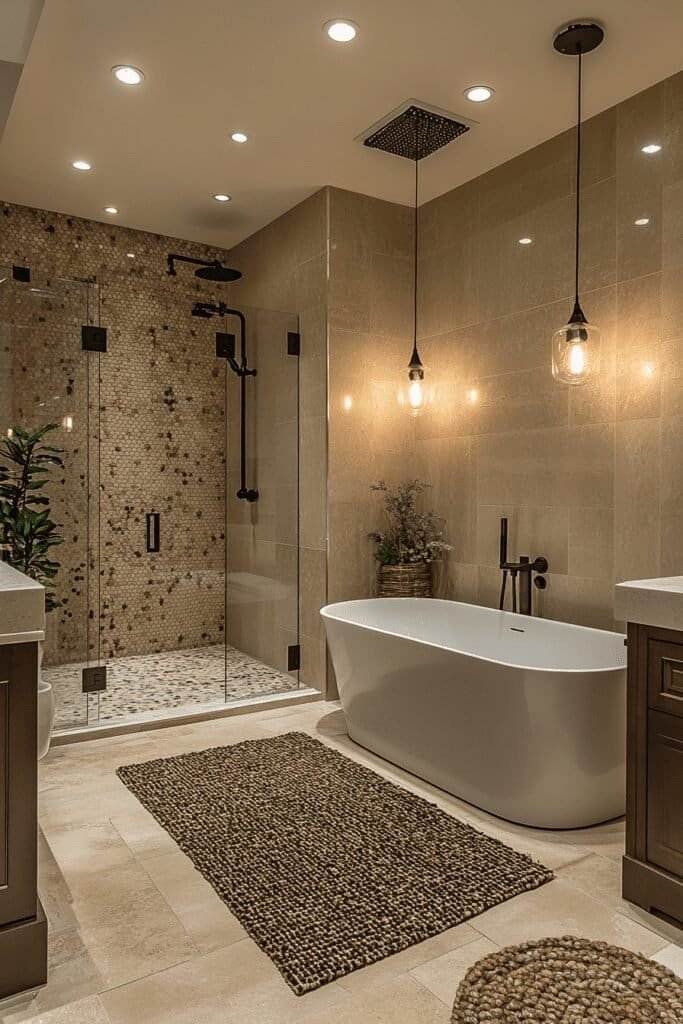

Wet Room Cons
1. High Installation Costs
Installing a wet room tends to be more expensive compared to a traditional bathroom. The entire space must be fully waterproofed, which requires specialized labor and materials. The flooring, walls, and drainage system all need professional installation to prevent leaks. This additional work often drives up the installation costs.
2. Water Splashing
A downside to the open design is that water can splash throughout the bathroom. Unlike walk-in showers, where water stays confined to a specific area, wet rooms may result in wet floors outside the shower zone. This makes keeping the bathroom floor dry more challenging unless drains and splash guards are carefully positioned.
3. Humidity and Ventilation Issues
Without proper ventilation, the open nature of this bathroom style can lead to moisture build-up, increasing the risk of mold or mildew over time. Effective ventilation is essential to maintain air quality and reduce condensation. Installing an exhaust fan or even underfloor heating can help manage humidity levels.
4. Privacy Concerns
The open layout of a wet room may compromise privacy, particularly in shared bathrooms. While ideal for a master bathroom or an en-suite, it may not be the best option for households with multiple users or guests.
5. More Frequent Maintenance
Although these bathrooms are easy to clean, the open design requires more frequent maintenance to keep floors dry and avoid slipping hazards. Anti-slip tiles and proper drainage can mitigate this, but it’s an important factor to consider when deciding if this style is right for you
How Do Wet Rooms Compare to Walk-in Showers?
Both wet rooms and walk-in showers are minimalist and barrier-free in design, but they differ in a few key ways:
1. Waterproofing
Wet rooms require full-room waterproofing, meaning every surface from the floor to the ceiling must be protected against water damage. In contrast, walk-in showers only need localized waterproofing, typically confined to the shower area. This makes walk-in showers more affordable and easier to install compared to wet rooms.
2. Water Containment
Walk-in showers tend to contain water more effectively than wet rooms, as they are typically enclosed by at least one or two walls or glass partitions. Wet rooms, on the other hand, allow water to splash freely, which can spread to other parts of the bathroom. Installing well-placed drains and splash guards can help control this issue in a wet room.
3. Accessibility
Both options provide easy access, but wet rooms have the edge in terms of complete accessibility. With no barriers at all, they are perfect for individuals with mobility challenges or for wheelchair access.
4. Installation Costs
Walk-in showers are generally more budget-friendly, as they require less extensive waterproofing than wet rooms. Wet rooms tend to involve more upfront costs due to the need for full-room waterproofing, specialized drainage, and professional labor.
5. Design Flexibility
Wet rooms offer greater flexibility when it comes to design. Because there are no defined shower zones, you have more freedom in terms of the layout, including the option to incorporate a bathtub or multiple showerheads.
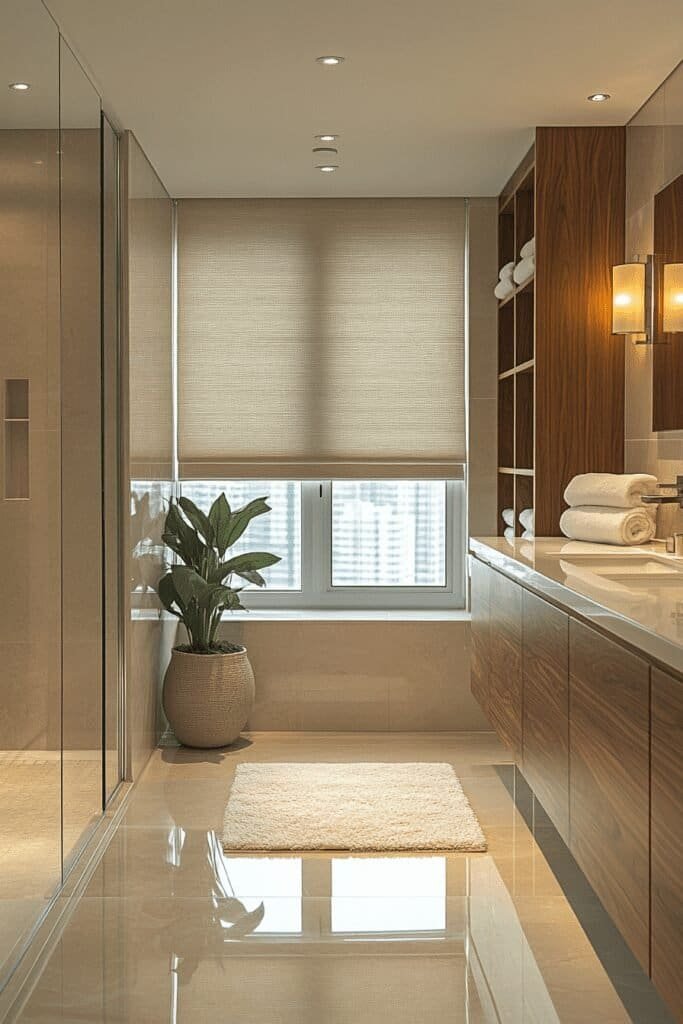

Are Wet Rooms Right for Your Home?
Wet rooms are a great choice if you’re looking to create a modern, spa-like bathroom or need an accessible bathroom for yourself or family members. However, they may not be suitable for every home, particularly if you are concerned about water splashing or high installation costs. Proper planning, budgeting, and professional installation are crucial to making sure a wet room works effectively and fits your lifestyle.
Frequently Asked Questions (FAQs)
Q1: Are wet rooms more expensive than traditional bathrooms?
Yes, wet rooms typically cost more to install due to the extensive waterproofing required. However, their modern aesthetic and potential to increase home value may make the investment worthwhile.
Q2: Can a wet room have a bathtub?
Yes! Many wet rooms incorporate freestanding bathtubs, creating a luxurious and versatile space.
Q3: Are wet rooms good for small bathrooms?
Absolutely. Wet rooms are ideal for small bathrooms as they eliminate barriers, making the space feel larger and more open.
Q4: Do wet rooms increase home value?
A well-designed wet room can add value to your home, particularly in luxury markets or homes undergoing major remodels.
Q5: How do you prevent water from splashing everywhere in a wet room?
Strategically placing drains and installing glass partitions or splash guards can help manage water flow in a wet room.
Q6: What’s the average cost to install a wet room?
Costs can range between $5,000 and $15,000, depending on the size of the room, materials used, and the complexity of the waterproofing system.
Final Thoughts
Wet rooms offer a unique combination of style, accessibility, and functionality, making them an attractive option for many homeowners. While they come with higher installation costs and specific maintenance needs, their ability to maximize space and enhance the modern bathroom design makes them a worthwhile investment for those looking to create a spa-like retreat at home.
Disclaimer: As an Amazon Associate, I earn from qualifying purchases. This means that if you click on certain links on this site and make a purchase, I may receive a small commission at no additional cost to you.
